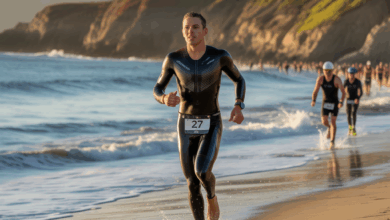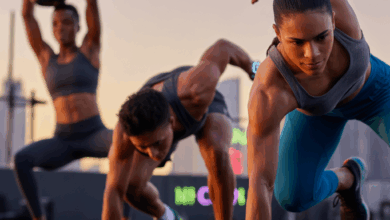What Is a Good Average Heart Rate While Cycling — Find Your Ideal BPM

Ever glanced down at your cycling computer halfway through a ride and wondered, “Am I pushing too hard or not enough?” Picture yourself on a sunny Sunday group ride — everyone’s power meters and heart-rate straps singing different tunes — and you want a clear, practical answer. Understanding what is a good average heart rate while cycling helps you train smarter, stay healthy, and hit your goals faster.
Understanding heart rate basics: why it matters on the bike
Your heart rate (beats per minute or BPM) is a real-time measure of how hard your body is working. For cyclists, it’s a reliable gauge of cardiovascular stress and can guide pacing, recovery, and workout intensity. Unlike power, which measures mechanical output, heart rate reflects the physiological load — influenced by fatigue, temperature, hydration, and stress.
How to estimate your maximum heart rate
Start by estimating max heart rate (HRmax). Two common formulas:
- Traditional: HRmax ≈ 220 − age
- Tanaka formula (often more accurate): HRmax ≈ 208 − 0.7 × age
Example: a 35-year-old would have an estimated HRmax of about 183 bpm (Tanaka). These are estimates — field testing or lab tests give better precision.
What is a good average heart rate while cycling? (Zones and examples)
There isn’t a single “good” number for everyone. Instead, aim for a heart-rate zone based on your goals:
- Recovery / Easy (50–60% HRmax): Light spinning, conversational pace. Good for active recovery rides.
- Endurance / Base (60–70% HRmax): Long steady rides; builds aerobic capacity.
- Tempo (70–80% HRmax): Challenging but sustainable, improves stamina.
- Threshold (80–90% HRmax): Hard efforts near lactate threshold; improves sustainable high-intensity pace.
- VO2max / Anaerobic (90–100% HRmax): Short, maximal efforts; improves peak power and fitness.
Practical BPM examples using a 35-year-old (HRmax ≈ 183):
- Recovery: ~92–110 bpm
- Endurance: ~110–128 bpm
- Tempo: ~128–146 bpm
- Threshold: ~146–165 bpm
- VO2max: ~165–183 bpm
Real-world averages
For many recreational cyclists, a good average heart rate on a typical steady ride falls between 120–150 bpm, depending on age and fitness. Competitive riders or those doing tempo rides may average higher. Commuters or leisure cyclists might average lower, around 100–120 bpm.
Factors that change your heart rate while cycling
Don’t assume your heart rate is a fixed number — it varies with:
- Fitness level and recent training load
- Heat and humidity (heart rate rises when hot)
- Hydration and nutrition status
- Altitude and terrain (climbing increases heart rate)
- Stress, sleep quality, and illness
How to use heart rate to structure rides: practical tips
Use heart rate data alongside perceived exertion and, if available, power or speed. Here are actionable ways to apply HR zones to your cycling:
- Long slow distance (LSD): 60–70% HRmax for endurance and fat adaptation.
- Tempo sessions: 70–80% HRmax for 20–60 minutes to build stamina.
- Threshold intervals: 3–8 × 8–12 minutes at 80–90% HRmax with equal rest to raise sustainable speed.
- VO2 intervals: 30–90 seconds at 90–100% HRmax with full recovery to increase peak capacity.
- Recovery rides: Keep below 60% HRmax — easy cadence, short duration.
Sample week (for a weekend-warrior cyclist)
- Monday: Rest or short recovery spin (≤60% HRmax)
- Wednesday: Tempo ride 45 minutes (70–80% HRmax)
- Saturday: Long endurance ride 2–3 hours (60–70% HRmax)
- Sunday: Optional short interval session (80–95% HRmax) or group ride
Training tips, lifestyle advice, and variations
To optimize your average heart rate and overall fitness:
- Use a reliable heart rate monitor (chest strap is most accurate).
- Perform a field test (20-minute all-out) to estimate threshold heart rate for better zone accuracy.
- Pair heart rate training with strength work (2× per week) to improve muscular endurance.
- Prioritize sleep, hydration, and balanced meals — low glycogen or dehydration raises heart rate for the same effort.
- Mix workouts: steady rides, interval training, hill repeats, and recovery spins to avoid plateauing.
Integrate these into your broader fitness plan — check out our workout routines and nutrition guides to build a complete program. For daily recovery and lifestyle hacks, visit our wellness tips page.
When to worry about your heart rate
Occasional spikes are normal, but seek medical advice if you experience:
- Consistent unusually high resting heart rate or very high HR at easy effort
- Dizziness, chest pain, or fainting during rides
- Rapid unexplained drops in performance paired with elevated heart rate
Frequently Asked Questions
1. Is a high heart rate while cycling bad?
Not necessarily. High heart rate during hard efforts or intervals is normal. It becomes concerning when your heart rate is disproportionately high for an easy effort or when accompanied by symptoms like chest pain, dizziness, or fainting. If in doubt, consult a healthcare professional.
2. How do I measure my average heart rate during a ride?
Use a bike computer or fitness app paired with a heart-rate monitor. Most devices report average BPM for the duration of the ride. For training purposes, look at time spent in each heart-rate zone rather than just the mean.
3. Should I train by heart rate or power?
Both metrics are useful. Power gives immediate mechanical output, while heart rate reflects physiological strain. Beginners often benefit from heart-rate training; more advanced cyclists combine power and heart rate for the most precise training.
Conclusion — Take control of your cycling heart rate
So, what is a good average heart rate while cycling? It depends on your age, fitness, and training goals — but knowing your zones and monitoring BPM will guide you to smarter, safer, and more effective rides. Start by estimating HRmax, track your zones with a reliable monitor, and blend steady rides with targeted intervals to improve. Ready to make your training more intentional? Check our workout routines and begin a plan this week — your next ride will feel better and more productive.
Call to action: Put on your heart-rate monitor, pick one of the sample workouts above, and try a focused session this week. Track how your average heart rate responds — then tweak durations and intensity to match your goals.





